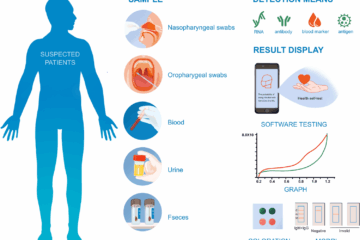![[breastfeeding]](https://cdn1.medicalnewstoday.com/content/images/articles/309/309038/breastfeeding.jpg)
The term “gut microbiome” refers to trillions of microbial cells that live in community in the digestive tract. Recently, studies have revealed that this community of bacteria has a profound impact on human physiology, metabolism,nutrition and the immune system.
An unhealthy gut microbiota has been linked with a number of diseases, such as inflammatory bowel disease and ulcerative colitis.
A neonate has no gut microbiota, but development starts at birth and continues to establish itself over the first few years of life. Medical News Today previously reported that infants born by Cesarian section may lack essential gut microbiota, but that vaginal swabbing can help to make up for this.
The first exposure, and accumulation, of gut microbiota comes from the mother. Research has shown that it starts with the birthing process and continues its early development as the child feeds, benefitting particularly as the mother breastfeeds.
Glycoproteins in breast milk nourish the gut microbiome
Now, scientists from the University of California-Davis have revealed how breast milk contributes to the process.
Fast facts about breastfeeding
- In 2011, 79% of newborn infants started to breastfeed in the US
- 49% of infants born in 2011 were breastfeeding at 6 months
- 27% were still breastfeeding at 12 months.
Learn more about breastfeeding
While infants are nursing, their gastrointestinal tracts become enriched with specific protective microbes.
Breast milk guides the development of a newborn’s gut microbiome. It nourishes a very specific bacterial population, and this, in turn, provides nourishment and protection for the child.
In previous studies, the authors of the current research showed that the source of this nourishment is the glycoproteins that are present in milk.
These glycoproteins comprise protein as well as molecules containing multiple sugars, called oligosaccharides.
Prof. David A. Mills, PhD, who is the Shields Endowed Chair in Dairy Food Science, and colleagues had also discovered that the infant-associated subspecies of a particular bacterium, known as Bifidobacterium longum subsp. infantis, or B. infantis, produces a particular enzyme known as endo-β-N-acetylglucosaminidase (EndoBI-1).
EndoBI-1, which was identified by Prof. Mills’ team, can separate the oligosaccharides from the milk glycoproteins.
In the current study, Prof. Mills and coauthors hypothesized that these oligosaccharides were the food source for B. infantis.
The researchers have demonstrated that not only can the enzyme break down glycoproteins and release the oligosaccharides from the mother’s milk, but that it could do the same for cow’s milk.
They showed that released oligosaccharides are a substrate for the growth of B. infantis, but they also found that the oligosaccharides do not nourish adult-associated bifidobacteria.
The Oxford Dictionary defines a substrate as “the surface or material on or from which an organism lives, grows, or obtains its nourishment.”
Cow’s milk as a source of infant prebiotic
The authors believe the study could lead to the use of cow’s milk to provide the necessary compound as a prebiotic for infants.
The findings suggest, says Prof. Mills, that if bioactive oligosaccharides can be incorporated into infant formula, this would lead to a better product.
Prof. Mills explains that B. infantis includes many genes that are involved in breaking down glycoproteins in mother’s milk in order to release the oligosaccharides.
Mother’s milk has evolved in mammals over millions of years, he adds. This evolution has taken place alongside the development of beneficial gut microbiota that the mother’s milk has nourished and enabled to thrive.
As Prof. Mills points out:
“It is the only food that co-evolved with humans to make us healthy.”
[Source:- MNT]




